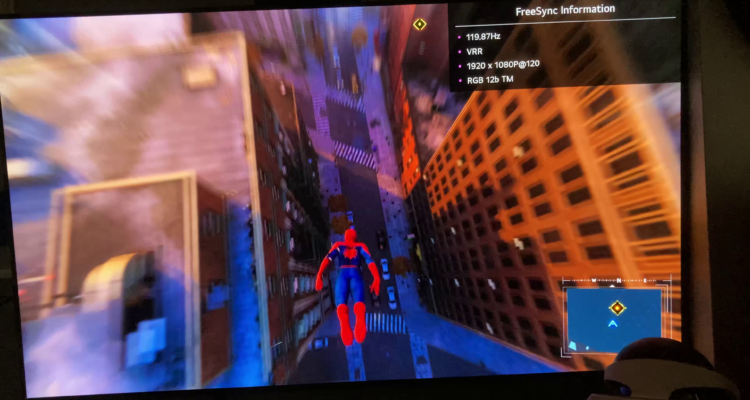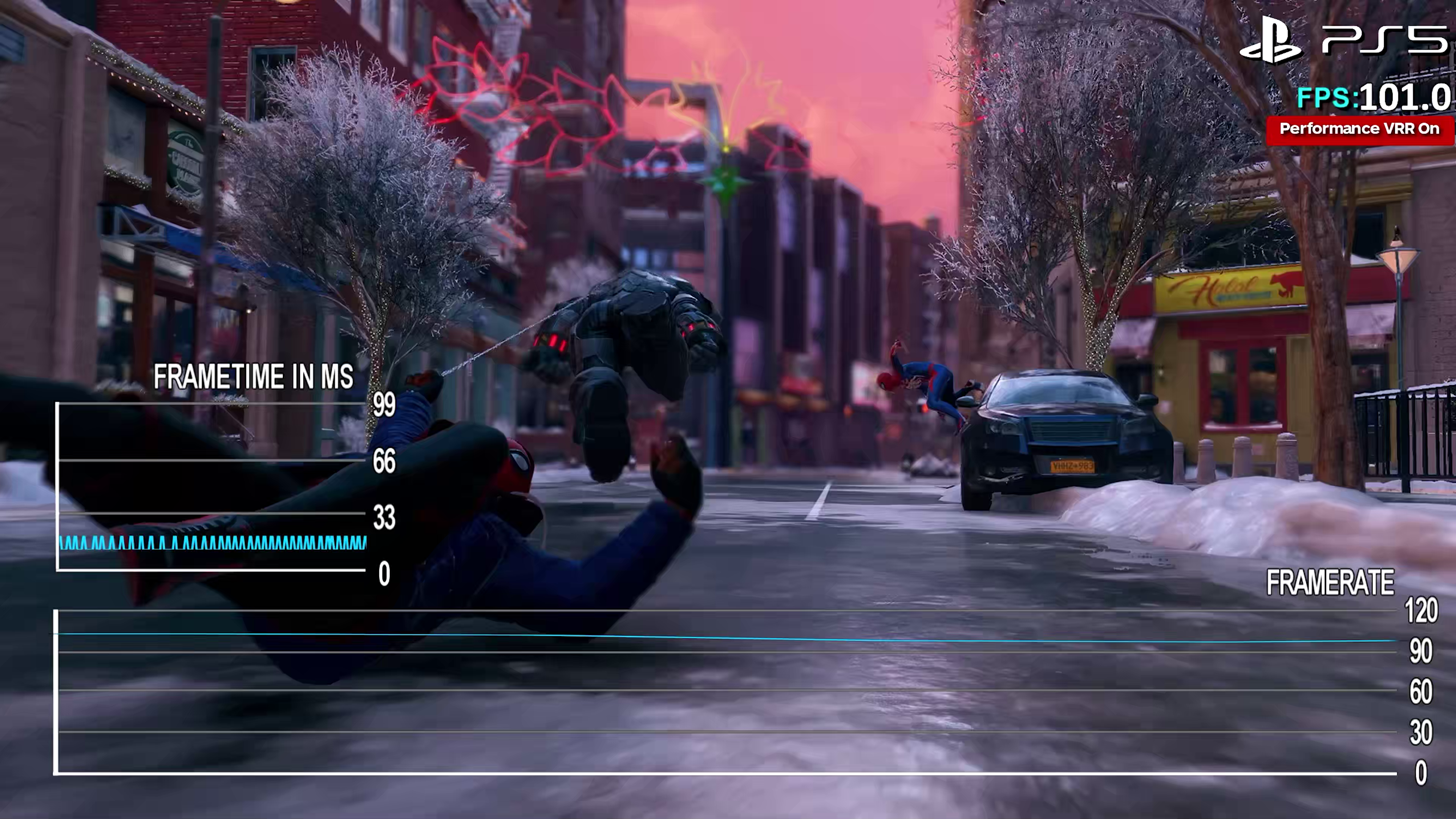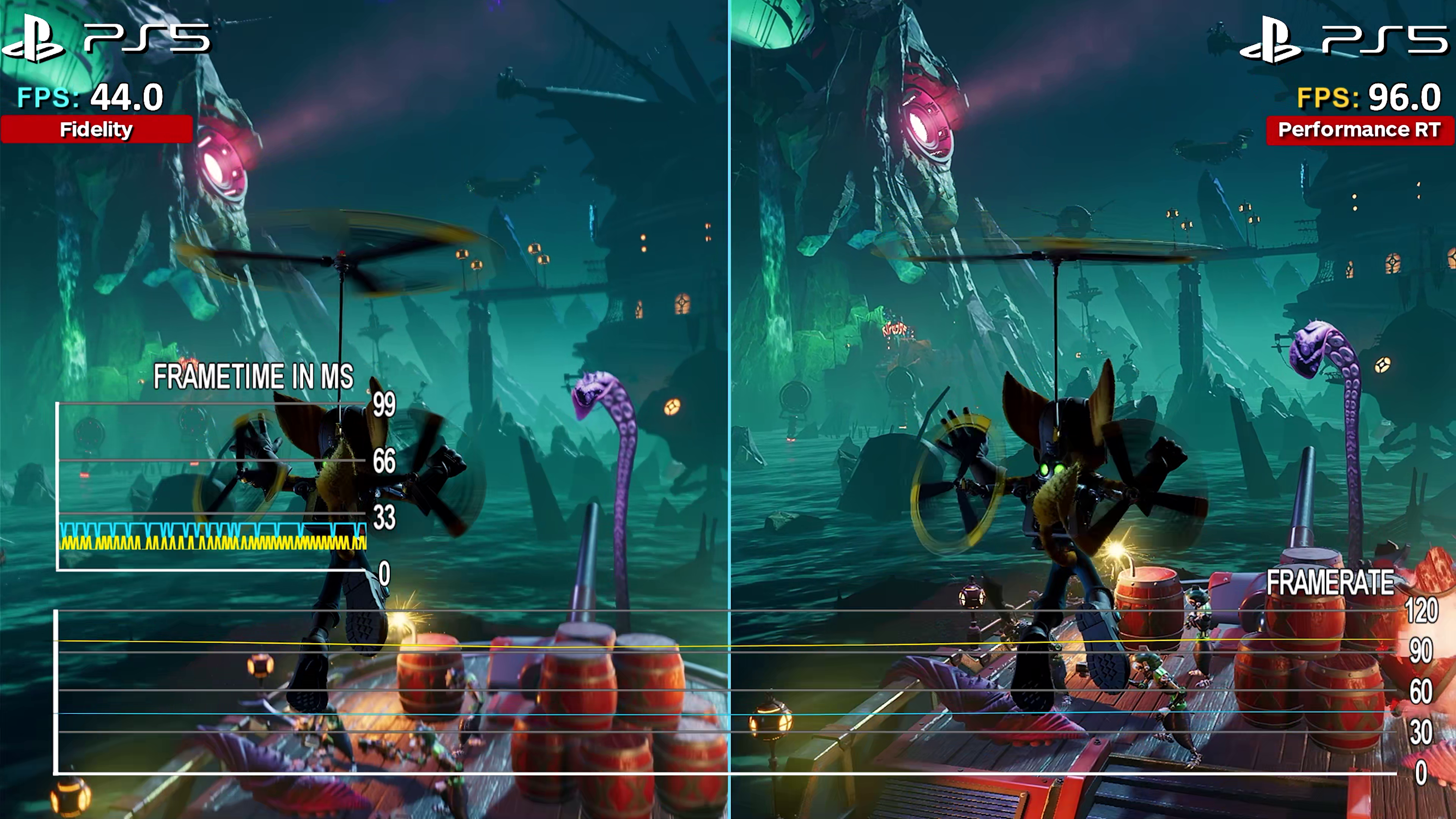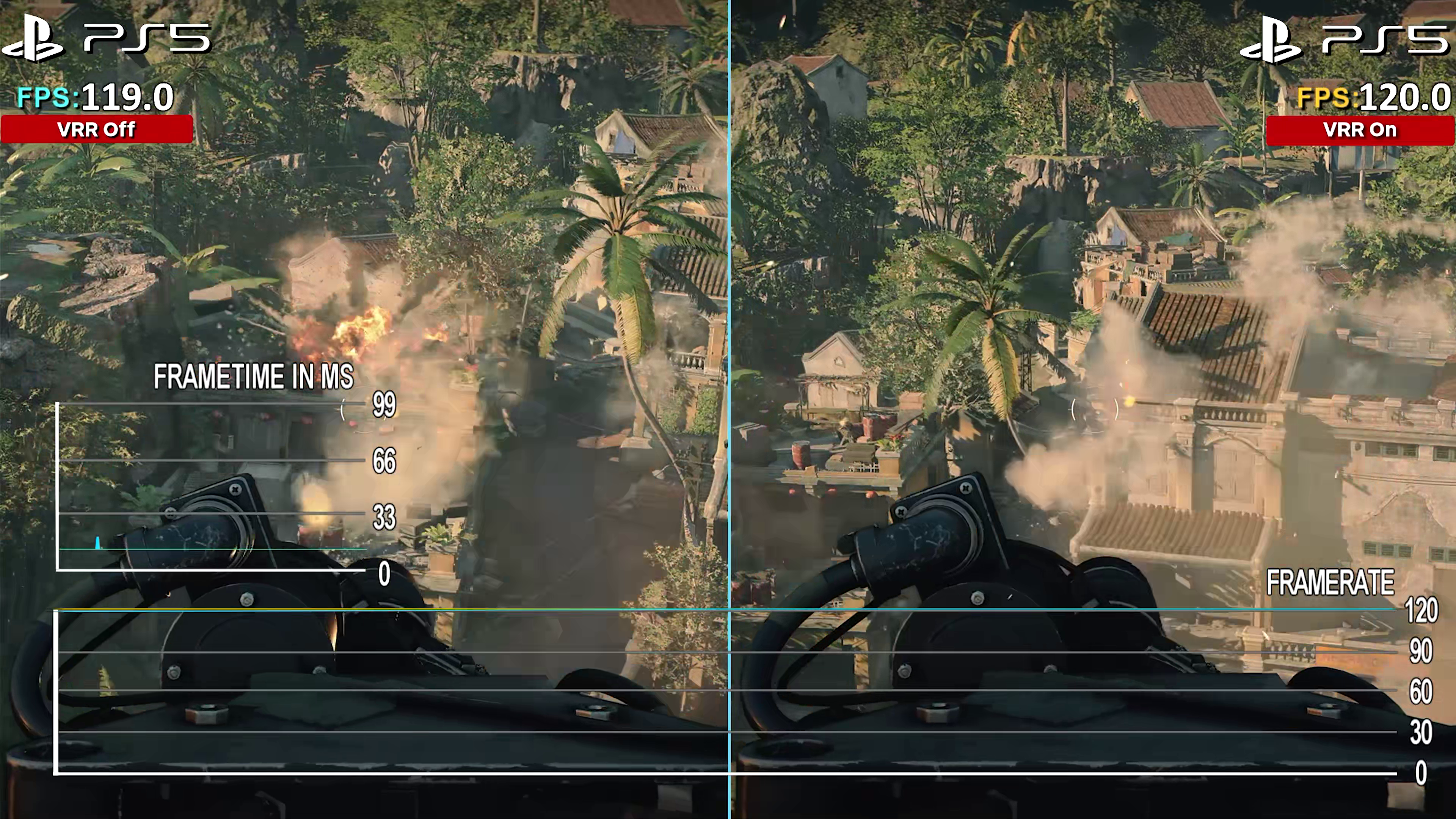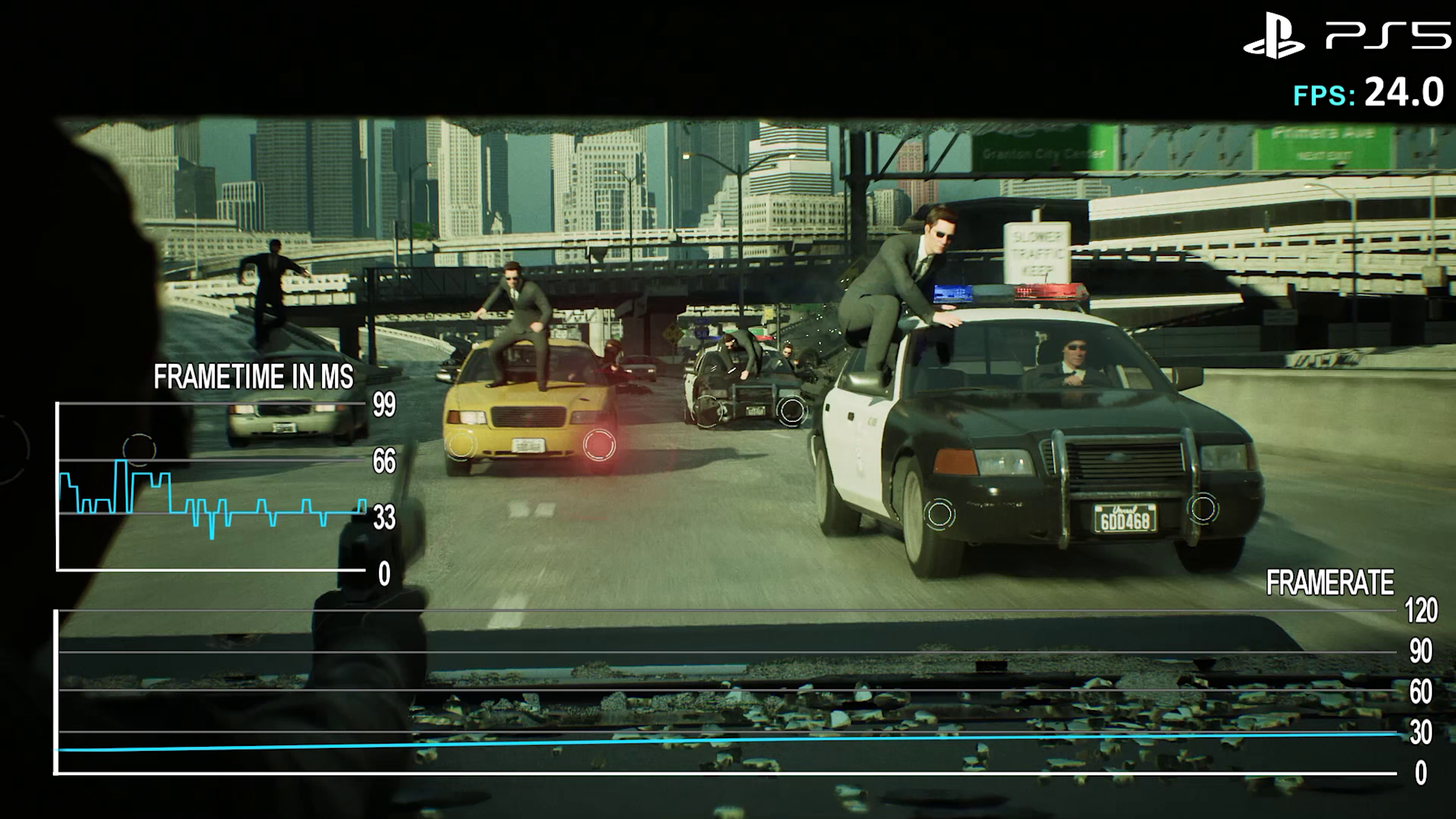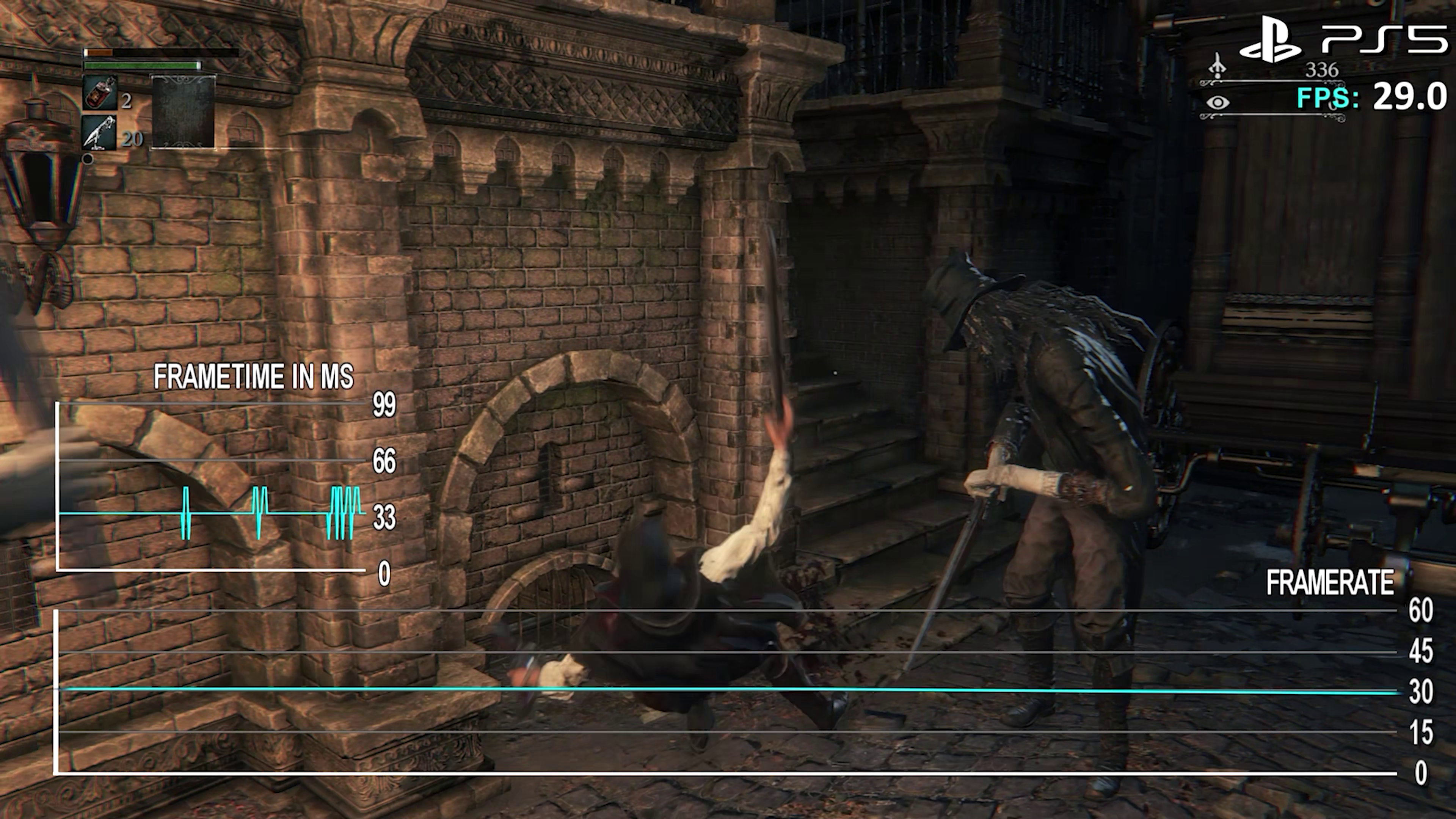Variable Rate Refresh has been one of the most requested features on the PlayStation 5 since it launched nearly two years ago. Sony has now resolved that, finally rolling out VRR to PS5 consoles, allowing players with a compatible TV or monitor to activate the feature in potentially any PS5 game. There’s a short list of games that will receive a patch enabling VRR support in the coming weeks, but you can turn it on for unsupported games as well – just know that those without official support might not achieve perfect results.
What is VRR and how does it work?
VRR is a relatively new technology (2013) that changes a long-standing limitation of computer and console display methods. Prior to VRR (also known as Free-Sync/G-Sync), your TV or monitor fixed the rate at which games could update their images each frame, based on the speed at which the screen could refresh its display to draw a new image. Most popular TVs tended to be 60Hz, which is why 60fps has been the target for gaming performance for so long. This means that the fastest a PC or console could send a new image would be every 16ms, which after 1 second gives us 60 new frames.
The next rate below this is 30fps or 33ms, which divides into 60fps evenly. This meant that game engines had to lock all their functions, loops and inputs into this fixed drumbeat that was dictated by the screen, called V-sync, and means that so long as both console and TV align at the same 16 or 33ms point in time, we get a new frame each time. The problem here, or at least one of a few, is this can come at a large cost to performance and impacts console and PC alike. This is why turning off V-sync can sometimes improve performance, as it lets the system ignore this fixed period of waiting for the screen.
The downside of turning off V-sync is that it can result in a torn image, where the screen has only part of the new frame at the bottom section, which is still being rendered by the PC/console, and part of the old one at the top. Until now this has been the dilemma: choose cleaner image quality at the cost of performance headroom or better performance at the cost of visual issues.
Enter VRR. This technology enables the console or PC to “play the drum” instead, letting it tell the screen when to refresh for a new frame (within a defined scope) when it is ready. This means we can almost get the best of both worlds: the frame-time can change per frame and the TV will adjust its cycle within that defined window. The net result is the system can fluctuate between the 8ms ceiling of 120fps and down to 20.9ms or 48fps. In other words, the removal of that 30 or 60fps cap while also eliminating screen tearing. On face value this sounds perfect, but some caveats come into the solution offered here.
VRR on PS5
Insomniac has leapt feet first into the VRR ring with not one but three updates which adds VRR to all 3 current modes, helped greatly by the single engine powering them all.
Starting with Spider-Man Remastered, the game has been updated with a 120Hz mode – similar to what we received last year in Ratchet and Clank: Rift Apart – which boosts the 4K Fidelity mode to increase from 30fps up to 40fps due to it being a divisible rate of the 8ms frame time that 120Hz requires. With VRR enabled this can extend beyond that, effectively unlocking the framerate to potentially reach that 120fps ceiling. In 4K Fidelity mode, activating VRR results in performance gains of 12-13%, and as much as 25% in some cases, over the old 40fps limit. Those gains are respectable, but Fidelity mode is actually the least impressive here, compounded by the fact it is mostly outside of the useful range of VRR here. Insomniac does appear to be using a Low Framerate compensation, similar to a 2:3 Pulldown used in 24fps cinema modes on TVs. Meaning when it drops into the 40s, it duplicates the frame 3x with the 8ms refresh. This helps reduce the judder when it falls outside of the VRR active range.
The two other modes see much bigger leaps – and this is true across all three games (Spider-Man, Miles Morales, and Rift Apart). The Performance Ray Tracing mode’s old 60fps limit is now doubled in the best of scenarios, though I only saw such a dramatic improvement briefly, when swinging across the city. In a variety of tested sections, performance increased more around 50%, meaning frame-times are halved and input response increased – one of the biggest benefits of 120fps or faster framerates. The leap is significant and really hammers home the extra work the team have put in here to maximize the engine and capitalize on the gains that are possible when V-sync is no longer set to such a (relatively) low rate. Furthermore, all three games now have increased resolution targets in all modes, which means the dynamic scaling levels have been increased. This is a great look under the hood of what headroom is available on these fixed console games that, unlike on PC, we rarely get to see.
Up next is Spider-Man: Miles Morales, which has the same updates and similar results as seen above, but the Performance mode delivers even better results. Ray Tracing is no longer active, but the resolution scale can go even higher, as does the framerate. This means often a further 17% improvement over the Performance RT mode, with framerates into the 90s and even 100fps levels in cinematic, combat and traversal segments. These boosts are significant for such an early and gorgeous looking cross-gen game, and do a great job of selling the very best of what VRR can offer.
Ratchet and Clank: Rift Apart is the next big hitter and again we see substantial performance increases in all modes. Now the Performance RT mode shines even brighter with framerates often north of 80fps and beyond, with the drops back into the 60s still feeling silky smooth due to it being within the sweet spot of VRR. It must be said that Insomniac continues to impress, with its three big games really showing off the potential of the PS5 and of Variable Rate Refresh itself.
Another example is Call of Duty: Black Ops Cold War. In the 120fps mode, turning VRR on results in nearly identical performance, but the tearing when VRR is off and the ripples in the 8ms frame-time are now cleaned up to deliver those fast and fluid controls the series is known for while also achieving a stable Image Quality.
Other games also gain benefits, such as Dirt 5 and its 120fps racing mode now eliminating screen tearing while maintaining the same fast and fluid input times.
What about games without official VRR support?
As mentioned before, the PS5 VRR update allows you to turn the feature on even for games that haven’t yet received an official VRR patch. Dying Light 2, which we covered earlier this year when it launched, has an adaptive V-sync feature, which meant that it could tear a little when it went slightly over budget in more GPU-limited sections, such as the opening foliage heavy segment in Performance mode. The game hasn’t received a developer-side VRR patch yet, but it still benefits from enabling the tech, though to a lesser degree. Enabling VRR on the PS5 system level eliminates the aforementioned screen tearing, but the game is still capped at 60fps in Performance mode (unlike the Series X version which can run up to the 90s). I suspect Techland will release an update soon to also allow the PS5 to break free of that artificial limit.
Cyberpunk 2077 is another that gains from VRR with no developer input. It’s only a 60fps game, which means the window that VRR has to work in is the smallest yet, but the PS5 version tends to stay above the 48fps minimum most of the time, which means that the small dips that can still occur are harder to notice, while the judder reduction and elimination of screen tearing from activating VRR is much more significant.
One main limitation of Variable Rate Refresh is that 30fps games fall outside of the range required for improvement from VRR. In the demanding Unreal Engine 5-powered Matrix Demo, the game acknowledges VRR is active, even without any patch. The frame-time can now flip at 8ms, but it still runs at the same 24fps or 30fps capped levels depending on the segment and it can still tear across the screen at times with frame-drops. This proves that, although the engine is aware that VRR is available, it would require Epic to release a patch for this to benefit. As such, the OS choice to be able to turn VRR on or off is welcome as some games, such as here, may not work at all.
Additionally, Backwards Compatibility games, even enhanced ones, do not recognise VRR. Testing Bloodborne, a game that would greatly benefit from increased frame-times and smoother frame delivery, we see that nothing has changed. The same inconsistent frame delivery issues still occur and the same 30fps limit remains. This shows the limits VRR has, namely that it can do nothing for 30fps titles, as that is outside of its operating window. VRR cannot increase frame rates over their target, meaning unless a developer updates the game, a 30, 60 or other targeted frame-rate limit will remain no matter what. Backing this up is Batman: Arkham Knight which is capped at 30fps and would have some tearing on PS4. This has not changed since the update, with the screen not engaging VRR and the game having no change in its output rate or input latency.
Overall, Variable Refresh Rate is a welcome addition to the PlayStation 5, despite arriving a fair bit later than expected – especially considering that Xbox had VRR up and running even before the Series X and S consoles launched. However, it is a welcome boost to the console’s tool kit nonetheless, offering choice for developers and gamers alike. The fact an Operating System option is enabled to force games to use it where possible is excellent, though as noted, not all games will be able to take advantage of it. As a solution to tearing and improving both performance and input latency, VRR is a win, just don’t expect it to be a silver bullet for performance issues across the board. Either way, I look forward to seeing what the future holds as more and more developers roll out patches to expand VRR support in their games.


